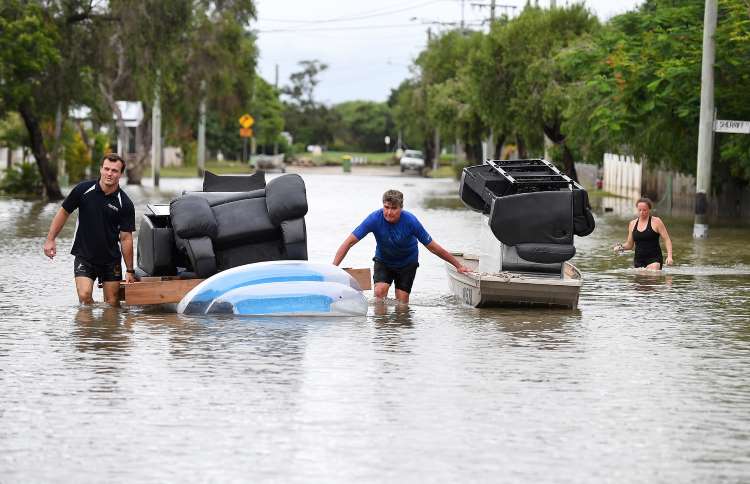
2019 was a terrible year for climate related disasters
Summary findings
A Christian Aid report, published in December 2019, shows that 2019 was a terrible year for climate related disasters, but it was also the year that people took to the streets in huge numbers around the globe to demand that politicians started to respond to the science on climate change with the urgency required.
Extreme weather, fuelled by climate change, struck every corner of the globe in 2019. From Southern Africa to North America and from Australia and Asia to Europe, floods, storms and fires brought chaos and destruction.
This report identifies 15 of the most destructive weather events of the year. All of the disasters caused damage of over US$1 billion, and four of them cost at least $10 billion. These figures are likely to be underestimates as they often show only insured losses and do not always take into account other financial costs, such as lost productivity and uninsured losses.
| Date | Location | Impact | Estimated cost (US$ billion) |
People killed |
| January | Argentina & Uraguay | Floods | 2.5 | 5 |
| January – February | Australia | Floods | 1.9 | 3 |
| March | Europe | Storm Eberhard | 1-1.7 | 4 |
| March | Southern Africa | Cyclone Idai | 2 | 1300 |
| March – June | Midwest & South US | Floods | 12.5 | 3 |
| March – April | Iran | Floods | 8.3 | 78 |
| May | India & Bangladesh | Cyclone Fani | 8.1 | 89 |
| June – August | China | Floods | 12 | 300 |
| June – October | North India | Floods | 10 | 1900 |
| August | China | Typhoon Lekima | 10 | 101 |
| September – October | Japan | Typhoon Faxai & Hagibis | Faxai 5-9 Hagibis 15 |
Faxai 3 Hagibis 98 |
| September | North America | Hurricane Dorian | 11.4 | 673 |
| September | Spain | Floods | 2.4 | 7 |
| September | Texas, US | Tropical Storm Imelda | 8 | 5 |
| October – November | California, US | Fires | 25 | 3 |
By no means do the financial figures show the whole picture – or even the most important parts of it. The report also provides estimates for the numbers of people killed in each event. The overwhelming majority of the deaths were caused by just two events, in India and southern Africa - a reflection of how the world’s poorest people pay the heaviest price for the consequences of climate change. In contrast, the financial cost was greatest in richer countries: Japan and the US suffered three of the four most costly events.
Each of the disasters in the report has a link with climate change. In some cases, scientists have identified the physical mechanism by which climate change influenced the particular event or calculated the extent of its relationship with human-caused warming. In others, the events are consistent with what scientists have warned will happen as the planet warms.
The extremes in this report occurred on a planet that is hotter than anything humans have ever experienced, and it’s going to get worse, due to committed warming from existing emissions. 2019 was around 1°C hotter than the pre-industrial average and is likely to have been the second-hottest year on record. But unless urgent action is taken to reduce emissions, global temperatures will rise at least another 0.5°C over the next 20 years, and another 2-3°C by the end of the century.
 2019 was not the new normal. The world’s weather will continue to become ever-more extreme and people around the world will continue to pay the price. The challenge ahead is to minimize the impacts through deep and rapid emissions cuts.
2019 was not the new normal. The world’s weather will continue to become ever-more extreme and people around the world will continue to pay the price. The challenge ahead is to minimize the impacts through deep and rapid emissions cuts.
Report Recommendations
In order to make 2020 the year the world turned the corner on climate change, we need to see countries:
- Upgrading their national climate plans (known as NDCs) that make up the Paris agreement. Under the terms of the accord countries are required to strengthen their NDCs every five years. Currently the pledges of the Paris agreement will deliver a world of more than 3C of global warming. We need to see this figure coming down by the end of the Glasgow summit.
- Nations need also to commit to a net zero emissions target, the date at which they will stop making the climate crisis worse: globally thisneedsto be net zero by around 2050. A number of countries have already announced these targets, but we need others to follow suit and for them to publish plans of how they will be achieved. All need to implement deeper action faster, as it is the total amountof emissionsreleasedthat matters more than the date for achieving net zero.
- Rich countries also have a responsibility to mobilise the $100 billion dollars a year they promised to developing countries to help reduce their emissions and also adapt to the climate impacts. This was promised back in 2009 and is vital to help poor countries become more resilient and help them follow a low-carbondevelopment pathway
Credits
Dr Katherine Kramer and Joe Ware, Christian Aid, December 2019